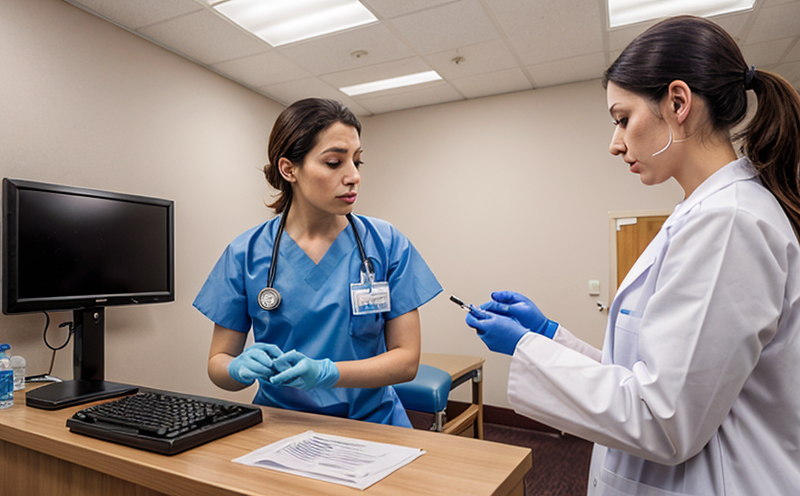Aflatoxin Residue Testing in Animal Feed
Aflatoxins are a group of potent carcinogenic mycotoxins produced by certain molds, primarily Aspergillus flavus and Aspergillus parasiticus. These toxins can contaminate animal feed through the growth of mold in grain crops such as corn, peanuts, and cottonseed. The presence of aflatoxins in animal feed poses significant health risks to livestock, including liver damage, reduced feed efficiency, decreased weight gain, and even death.
Regulatory bodies worldwide have established strict limits on the allowable levels of aflatoxin residues in animal feed to ensure food safety and animal health. For instance, according to the World Health Organization (WHO) and the Food and Agriculture Organization (FAO), the maximum permitted level for total aflatoxins (B1, B2, G1, and G2) is 20 ppb (parts per billion) in feed intended for broiler chickens. In contrast, the European Union allows a higher limit of up to 100 ppb in feed destined for non-food animals like pigs.
The testing methods used by Eurolab for aflatoxin residue analysis in animal feed are based on internationally recognized standards such as ISO 21738:2019 and AOAC Official Method 2003.1. These methods involve extraction of the sample, cleanup using solid-phase extraction (SPE), and detection via liquid chromatography-tandem mass spectrometry (LC-MS/MS). This ensures high sensitivity and specificity for accurate quantification.
Sample preparation is critical in aflatoxin residue testing. Properly grinding and homogenizing the feed sample helps ensure even distribution of any potential contamination throughout the sample. Extraction solvents like methanol or acetonitrile are used to dissolve the toxins, followed by cleanup steps to remove interfering substances. The resulting extract undergoes dilution before analysis.
The instrumentation used in our laboratory is state-of-the-art, featuring advanced LC-MS/MS systems capable of detecting even trace levels of aflatoxins down to 0.5 ppb sensitivity. Our experienced scientists and technicians ensure precise measurement by following rigorous quality control protocols throughout the entire process.
Reporting results accurately and comprehensively is crucial for our clients who rely on this information for decision-making purposes. Eurolab provides detailed reports outlining the test methodology, sample details, detected aflatoxin levels, and compliance with relevant regulatory limits. We also offer advice based on the findings to help improve feed safety practices.
Use Cases and Application Examples
- Supplier Audits: Conducting regular testing helps monitor supplier quality control efforts and ensure compliance with international standards.
- New Feed Product Development: Before launching a new feed product, it's essential to test for aflatoxin contamination to avoid potential risks associated with the first batch or subsequent batches.
- Routine Quality Control: Continuous monitoring ensures consistent quality and safety of feeds over time. This is especially important during periods when mold growth might be more prevalent due to environmental conditions or storage practices.
Benefits
The benefits of aflatoxin residue testing in animal feed extend beyond just meeting regulatory requirements. By ensuring that our clients' products are free from harmful levels of aflatoxins, we contribute to the overall health and well-being of livestock animals.
One key benefit is enhanced animal performance. When feeds contain allowable amounts of aflatoxin residues, it promotes optimal growth rates and feed conversion efficiency, leading to healthier and more productive animals.
Another significant advantage is protecting public health. Feeding contaminated animal products can lead to the transfer of aflatoxins into meat, dairy products, and eggs consumed by humans. By preventing such contamination from occurring at the source (i.e., in feed), we help safeguard human health globally.
From a business perspective, maintaining a high standard of product safety strengthens brand reputation among consumers who prioritize food quality and safety. It also reduces liability risks associated with recalls or lawsuits due to contaminated products.
Eurolab Advantages
Eurolab offers several advantages when it comes to aflatoxin residue testing in animal feed:
- Accurate Results: Our laboratory adheres strictly to internationally recognized standards, ensuring precise and reliable results.
- Experienced Staff: Our team consists of highly trained professionals with extensive experience in agricultural chemistry and toxicology.
- State-of-the-Art Equipment: We utilize cutting-edge analytical instruments that provide superior performance and accuracy.
- Detailed Reporting: Comprehensive reports accompany every test result, providing insights into the findings and recommendations for improvement if necessary.





